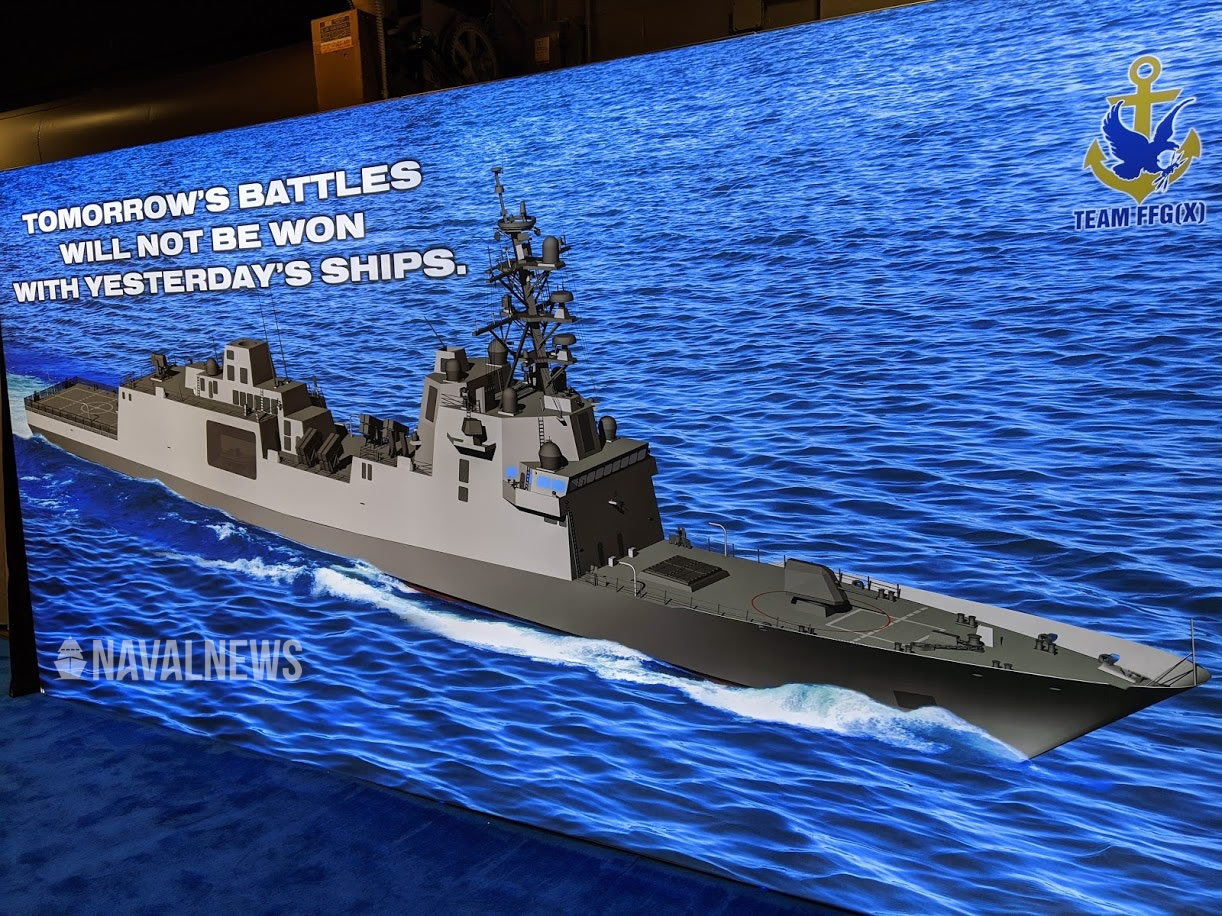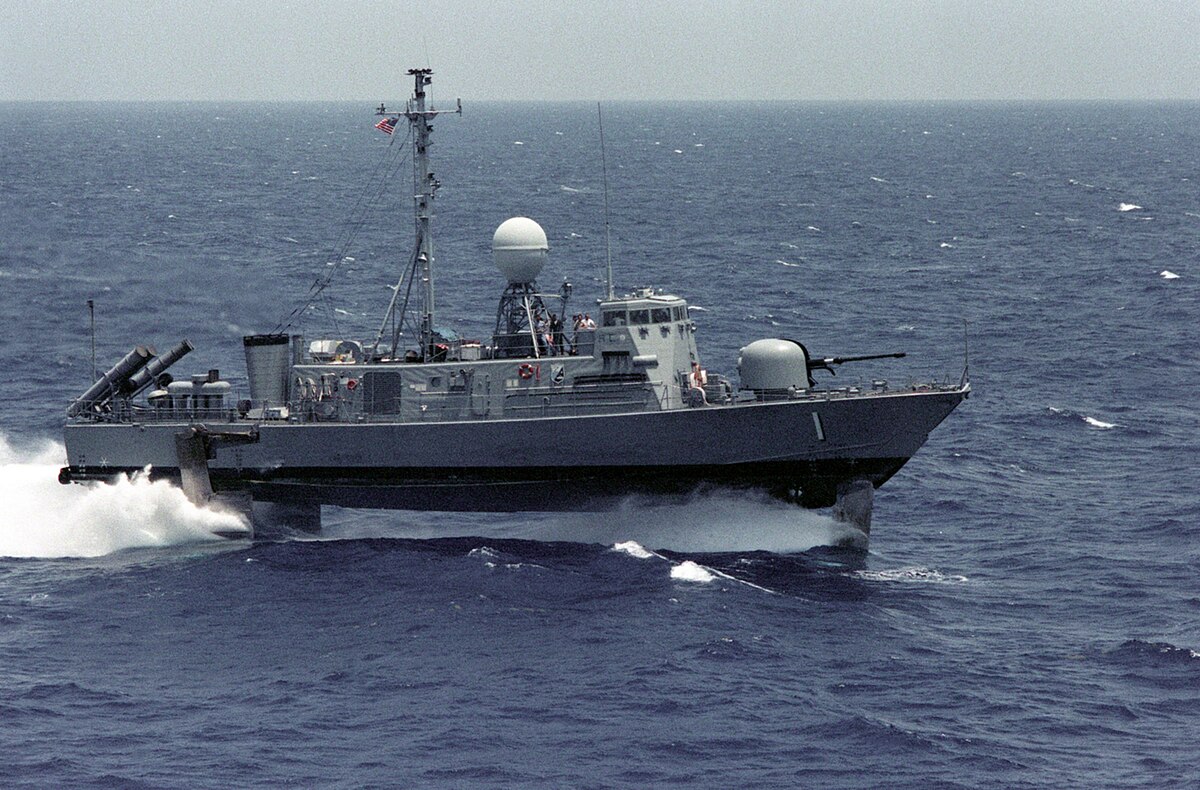On the FREMM (US) the panel array coverage is 3x and there is a serious mechanical design exploit that leaves the FREMM (US) vulnerable.
It may only be a 3-panel setup but eyeballing it it doesn't seem to have any major blind spots. And what is this design exploit?
4. Seaworthiness. draft/beam / length P: 6.7, 15.2 and top-heavy unless that is an aluminum superstructure?
How so? It's got a fuller hull form than the Burkes and those don't show topweight problems. Well, not until the cramming really sets in.
5. NSM is a good missile but it is short-ranged.
Given it's supposed to be the short-range low-footprint part of the antiship equation, and that the high end is likely to be a hypersonic weapon that won't fit on a frigate anyway, I fail to see what the problem is.
6. RAM launcher is an OHP air defense coverage bolo. Seriously? USS Stark Lesson?
You're gonna have to elaborate on that one, chief.
Knox hull.
There is room for a CODAG, but one must accept slower speed and a slightly shorter range for the compact plant. diesel-electric is direct path, while the gas-turbine-electric can be clutched in. I am whole hog for CNR steam plant myself. Cheap, reliable and easily mass produced.
The MACK if one is a CODAG fan can be a 4x mount for AESA radar billboards. No blind spots.
Automate. The tech is now proven so reduced crew is possible. Just do not fubar it like the LCS was.
Robot helicopters? Doable. Make it part of the weapon system launch logic as an additional set of eyes and launch platforms. EXPENDABLE item. Manned helos are not.
AAW /AShW/ASW... Might have to be radical and go SAM/AShM/ASROC and forego the gun. What about small-fry in green water operations? That is what the ATGMs are for Raymond.
Can it be done on 4000 tonnes?
Yes.
No, it can't.
Singapore's Formidable-class frigates are the closest thing to your idea that are also under 4000 tons. But they also fall flat in multiple categories that are going to cost tonnage.
Their radar is Herakles, a two-axis rotating PESA array. Not only do you need more tonnage for the extra power and cooling requirements of an AESA array, a 4-panel fixed arrangement is going to be heavier than the rotating array. So that's several hundred tons right there.
The Formidable-class is a CODAD-powered ship. A CODAG arrangement is going to be bulkier, let alone anything bringing in electric motors. So that's more tonnage. It also means carrying more fuel for their range, and that's more tonnage.
The Formidable class only has 71 core crew, which seems to me to be dangerously close to LCS levels of automation. That's more tonnage for crew accommodations.
The Formidable-class, being a French-built ship, is not going to be up to US Navy standards in structural strength. So that's a couple hundred tons of extra structural steel right there. I also have my doubts, given their compact size compared to their weapons fit, about being up to US Navy standards in growth margin.
Sylver A50 and A43 are significantly more compact than tactical-length Mark 41. So that's yet more tonnage.
Even foregoing a gun and downgrading the helicopter facilities for a smaller drone helicopter, I'm extremely skeptical of this coming in at under 5000 tons.
As for a straight Knox hull, that has no accommodations for signature reduction measures, which like it or not are part of the cost of admission these days, and considering you think the Constellations are too top-heavy I don't know why you think the much slimmer Knoxes would be any better in that regard. Then you consider having to replace all the steam piping, and yeah, at this point you're making a clean-sheet hull anyway.
As for CNR plants, where are you getting the reactor personnel for them? The US Navy has enough trouble getting reactor personnel for its carriers and submarines, this is going to drive up crew costs and that's the last thing the US Navy needs, not to mention it takes the intent of the crew automations and shanks it right in the kidneys. The macks... no, I don't think that's a good idea. They went away for a good reason - namely, the exhaust gases corroding the radars - and in any case they only supported old-school mechanically-scanned search radars, not significantly larger, heavier, and more infrastructure-intensive multi-panel phased-array installations.
And then there's the fact that I find the entire logic of trying to keep the tonnage down counterproductive. This is not the 1930s. The size of the hull has relation to the eventual cost of the ship mostly in that larger ships tend to carry more and more capable weapons and sensors. The combat systems are the largest part of the cost. Tonnage is cheap, and more tonnage can actually
save money, because the more cramped a ship is the more expensive it is due to how much of a pain in the ass it can be to fit everything. That's one of the reasons the Flight III Burkes are so much more expensive than their IIA predecessors. I'd submit that it's far better of an idea to bite the bullet and build a 6000 or even 7000-ton frigate than try to cram all these combat systems in a smaller hull.





